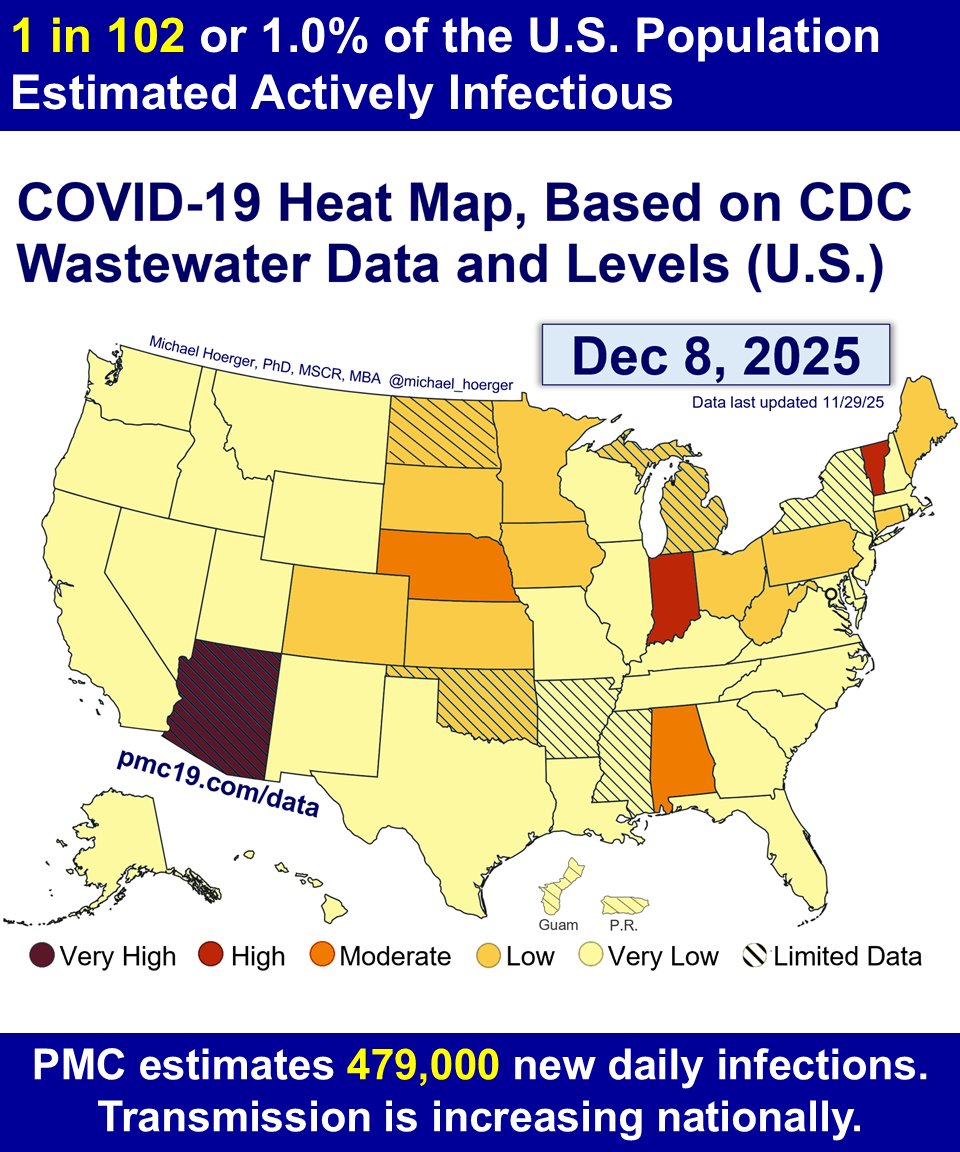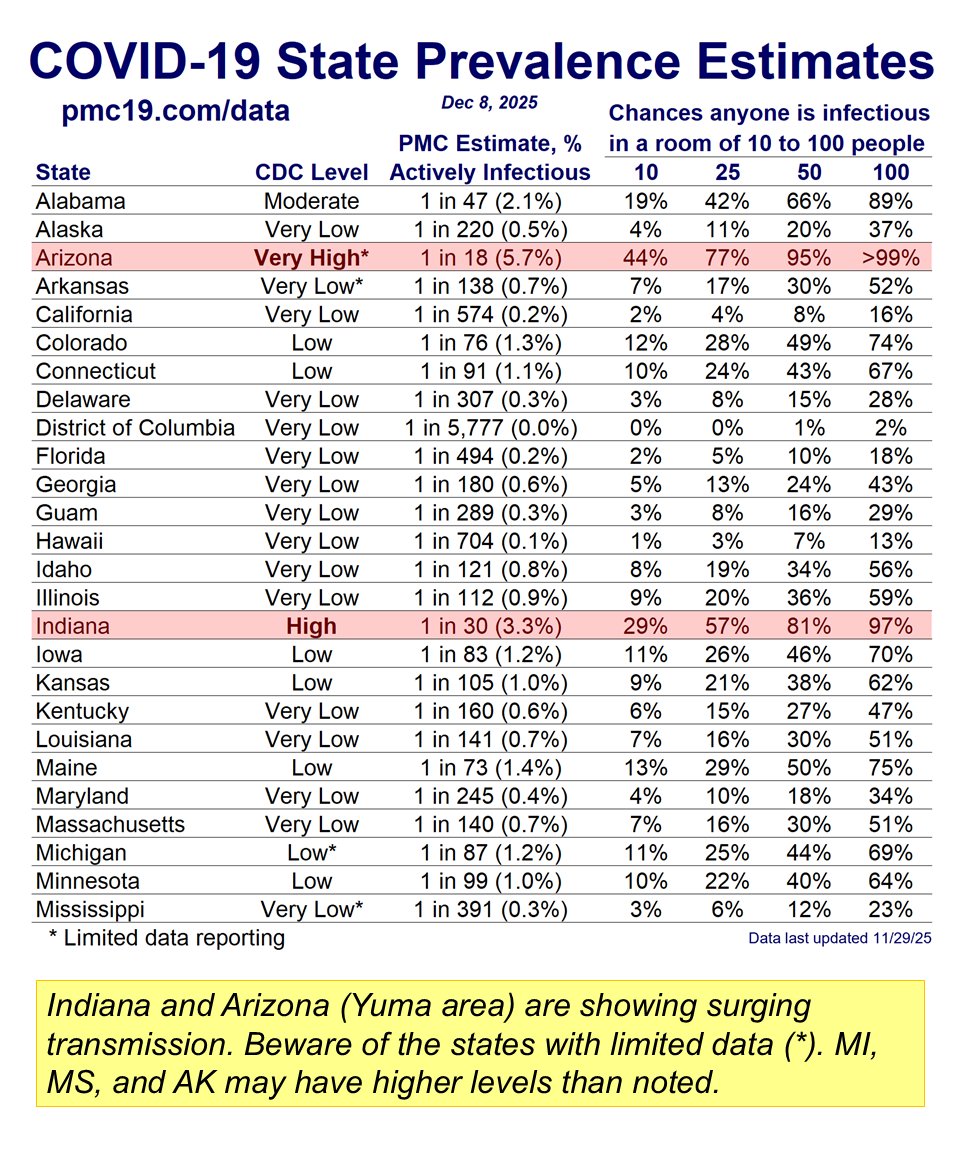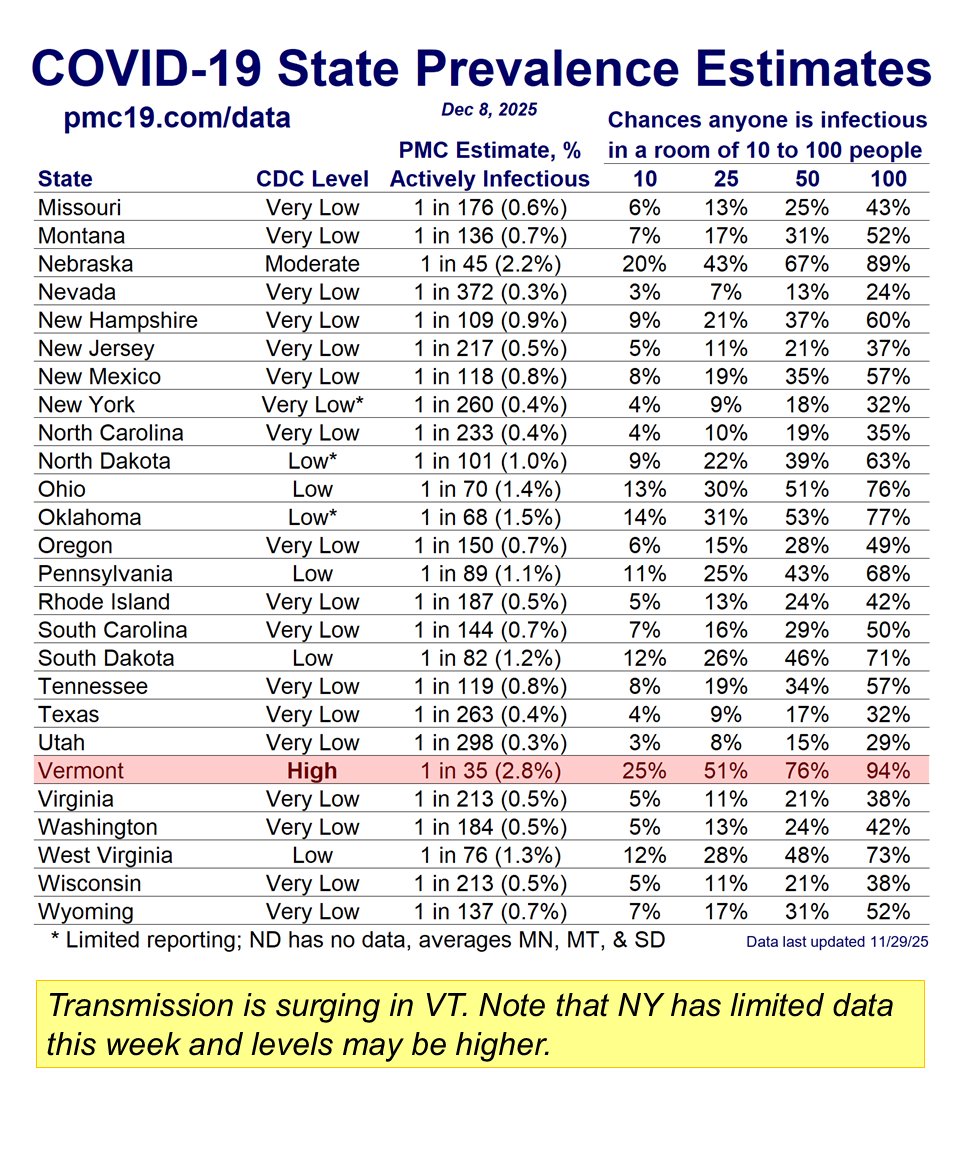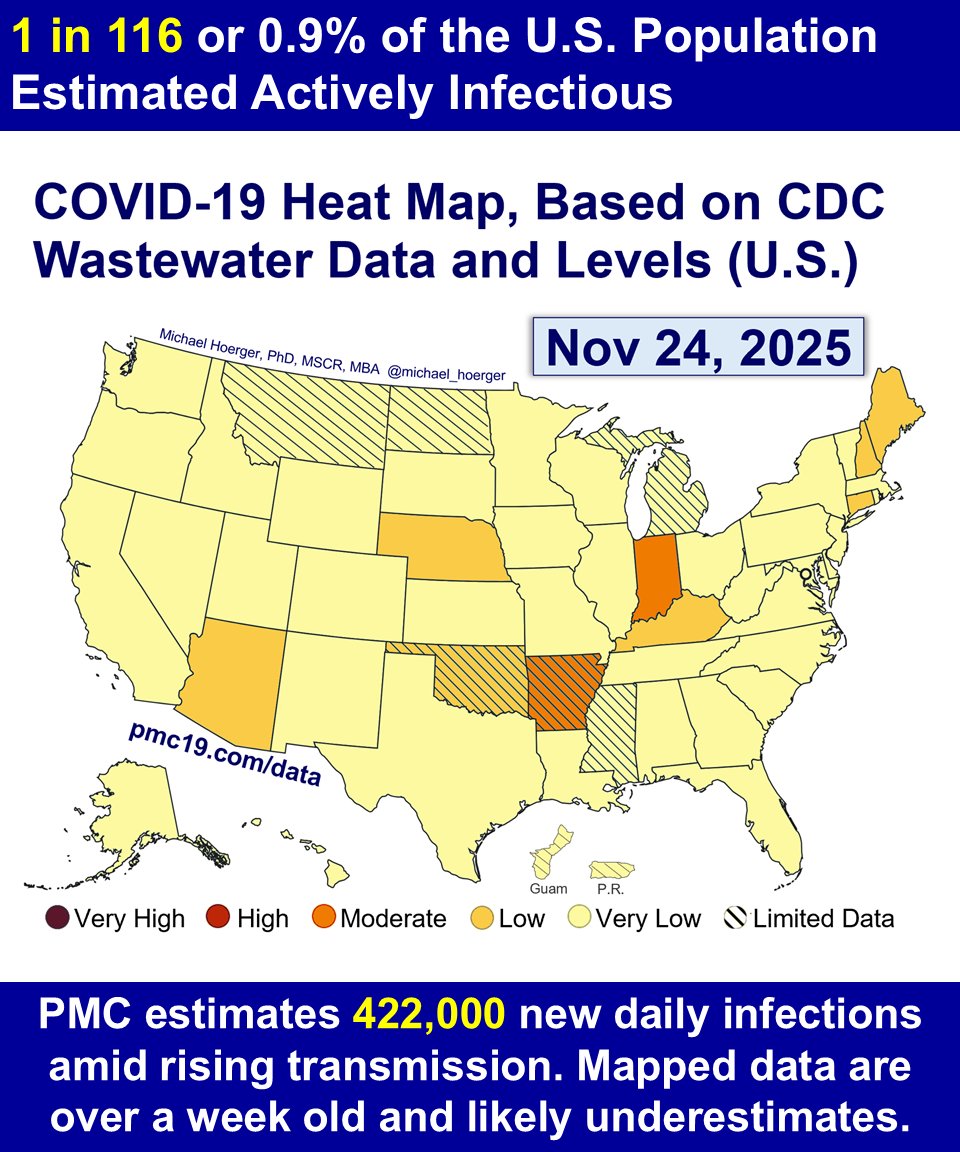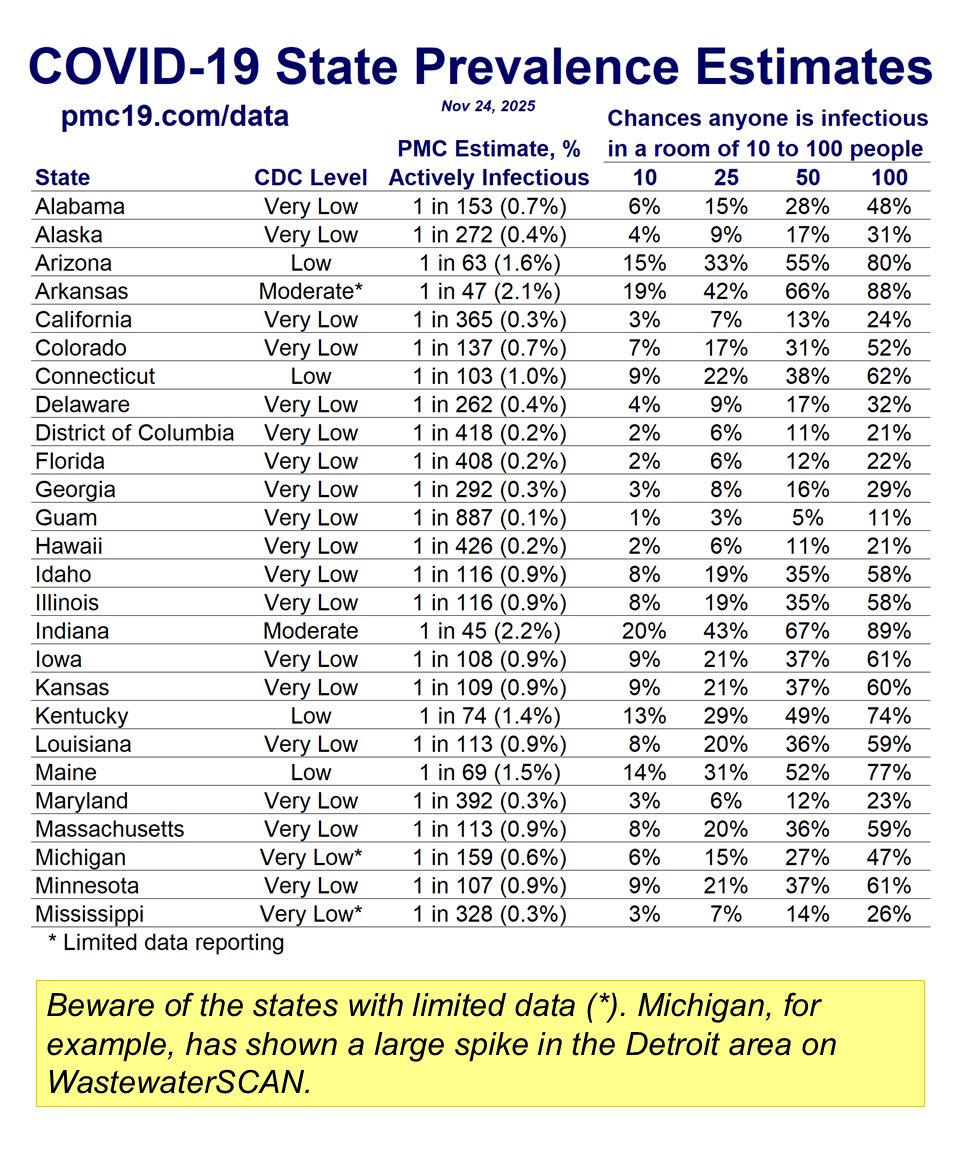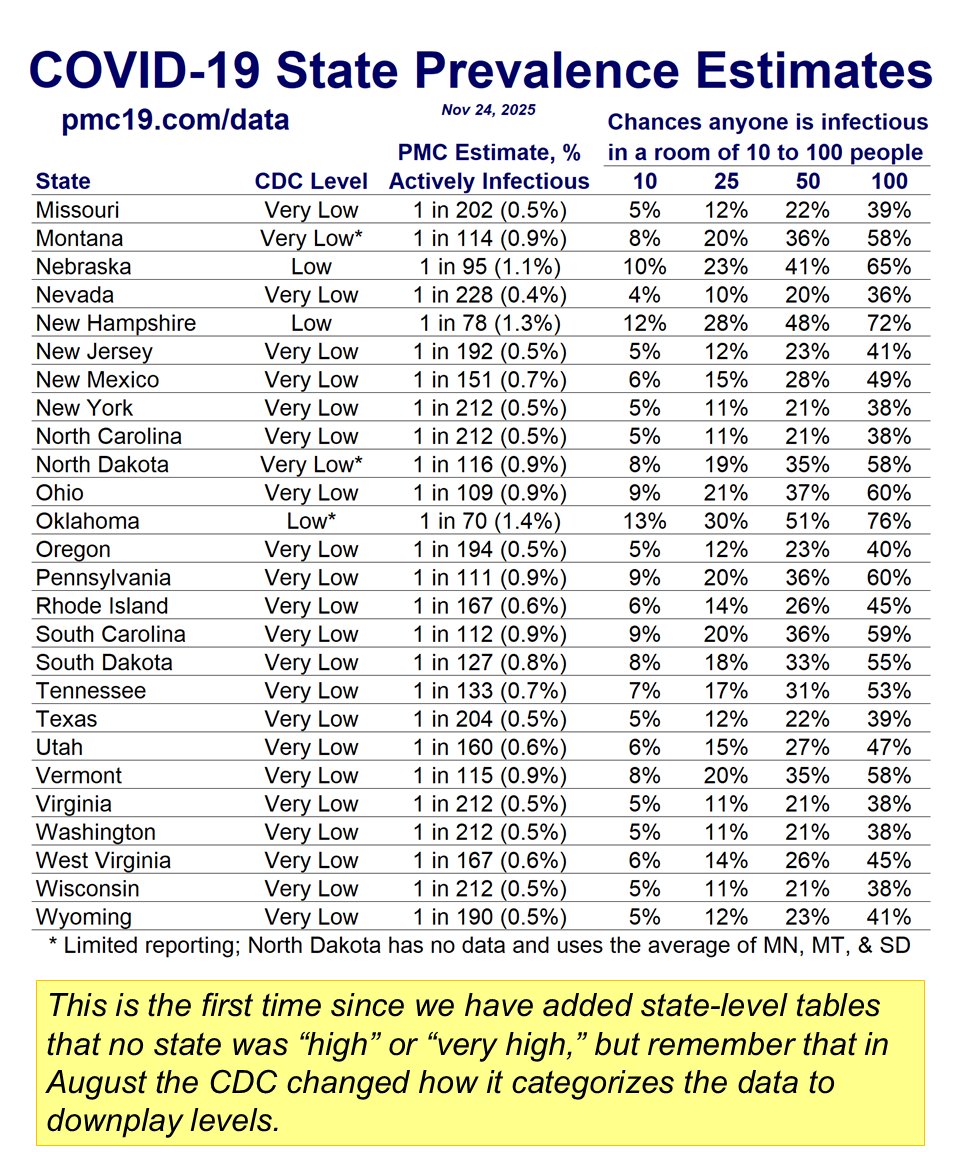PMC COVID-19 Forecasting Model, Sept 2, 2024
🧵1/8
We've headed from a false summit toward a larger peak in back-to-school transmission. Next week we'll know whether this is the largest or 2nd largest summer wave all-time. Expect 1.4-1.5 million daily infections at the peak.
This secondary peak is larger than anticipated previously, even when accounting for patterns of back-to-school transmission in prior years.
One, the West and South were peaking earlier, and the Northeast and Midwest have transmission picking up much faster than its falling off elsewhere. These are atypical regional differences.
Two, the 1-day isolation policy and general decline in school-based mitigation have unleashed transmission at higher levels than would be anticipated in prior years, even when accounting for the already-high levels of transmission as children went back to school.
Three, our model uses a combination of CDC and Biobot (former CDC contractor) data, using a 60% versus 40% mix for current case estimation. Biobot has not updated their data the prior two weeks without explanation. They were running much cooler than the CDC data, whether reflective of reality, or merely reporting delays. We have downgraded them to 20% in the model, and they will be downgraded further to 0% if they do not update their data this week.
You can take points 1 and 2 to account for the secondary and higher peak (shape of transmission), when models accounting for prior years would have suggested transmission slowing already, and point 3 accounting for a shift toward a slightly higher overall estimate of transmission.
🧵1/8
We've headed from a false summit toward a larger peak in back-to-school transmission. Next week we'll know whether this is the largest or 2nd largest summer wave all-time. Expect 1.4-1.5 million daily infections at the peak.
This secondary peak is larger than anticipated previously, even when accounting for patterns of back-to-school transmission in prior years.
One, the West and South were peaking earlier, and the Northeast and Midwest have transmission picking up much faster than its falling off elsewhere. These are atypical regional differences.
Two, the 1-day isolation policy and general decline in school-based mitigation have unleashed transmission at higher levels than would be anticipated in prior years, even when accounting for the already-high levels of transmission as children went back to school.
Three, our model uses a combination of CDC and Biobot (former CDC contractor) data, using a 60% versus 40% mix for current case estimation. Biobot has not updated their data the prior two weeks without explanation. They were running much cooler than the CDC data, whether reflective of reality, or merely reporting delays. We have downgraded them to 20% in the model, and they will be downgraded further to 0% if they do not update their data this week.
You can take points 1 and 2 to account for the secondary and higher peak (shape of transmission), when models accounting for prior years would have suggested transmission slowing already, and point 3 accounting for a shift toward a slightly higher overall estimate of transmission.

PMC COVID-19 Forecasting Model, Sept 2, 2024
🧵2/8
This graph shows year-over-year transmission. It clarifies the unusual shape of the transmission distribution. A "peak" or false summit, followed by a very slight decline in transmission (negligible), then a 2nd (true) peak.
🧵2/8
This graph shows year-over-year transmission. It clarifies the unusual shape of the transmission distribution. A "peak" or false summit, followed by a very slight decline in transmission (negligible), then a 2nd (true) peak.

PMC COVID-19 Forecasting Model, Sept 2, 2024
🧵3/8
Presently, we estimate a peak at 1.4 million daily infections. Next week, we will have a much better sense. It could be in the 1.3-1.5 million range. There's about a 50% chance it will be the largest summer wave.
🧵3/8
Presently, we estimate a peak at 1.4 million daily infections. Next week, we will have a much better sense. It could be in the 1.3-1.5 million range. There's about a 50% chance it will be the largest summer wave.

PMC COVID-19 Forecasting Model, Sept 2, 2024
🧵4/8
Happy Labor Day!
We're seeing higher transmission than during 91.6% of the pandemic, so COVID is very much not "over." In a gathering of 10 people of average risk, there would be a 1 in 4 chance someone has COVID if no special rules (testing, isolating, etc.).
Some schools still have not started yet and will begin tomorrow. Classrooms should presume someone has COVID. Mask, test, isolate until repeatedly negative.
🧵4/8
Happy Labor Day!
We're seeing higher transmission than during 91.6% of the pandemic, so COVID is very much not "over." In a gathering of 10 people of average risk, there would be a 1 in 4 chance someone has COVID if no special rules (testing, isolating, etc.).
Some schools still have not started yet and will begin tomorrow. Classrooms should presume someone has COVID. Mask, test, isolate until repeatedly negative.

PMC COVID-19 Forecasting Model, Sept 2, 2024
🧵5/8
Here's the heat map of transmission. You'll see a lack of a clear pattern because the South/West are slowing and the Midwest/Northeast are picking up.
Everywhere but Michigan has high transmission.
🧵5/8
Here's the heat map of transmission. You'll see a lack of a clear pattern because the South/West are slowing and the Midwest/Northeast are picking up.
Everywhere but Michigan has high transmission.
https://x.com/michael_hoerger/status/1830468980747727335
PMC COVID-19 Forecasting Model, Sept 2, 2024
🧵6/8
Nationally, we see 1 in 35 people are actively infectious. The South is the highest with about 1 in 30 actively infectious.
🧵6/8
Nationally, we see 1 in 35 people are actively infectious. The South is the highest with about 1 in 30 actively infectious.

PMC COVID-19 Forecasting Model, Sept 2, 2024
🧵7/8
Michigan (yellow line) has atypically low transmission. Happy to hear theories on this.
They have typically had unusual patterns of transmission. Perhaps the extended precautions during the 1st two years of the pandemic play some ongoing role.
About 0.9% are actively infectious in MI, about 1/3 the national average.
🧵7/8
Michigan (yellow line) has atypically low transmission. Happy to hear theories on this.
They have typically had unusual patterns of transmission. Perhaps the extended precautions during the 1st two years of the pandemic play some ongoing role.
About 0.9% are actively infectious in MI, about 1/3 the national average.

PMC COVID-19 Forecasting Model, Sept 2, 2024
🧵8/8
View the entire dashboard and weekly report at
Improve and share any images across platforms and the web. Thanks! Enjoy the holiday.pmc19.com/data
🧵8/8
View the entire dashboard and weekly report at
Improve and share any images across platforms and the web. Thanks! Enjoy the holiday.pmc19.com/data

• • •
Missing some Tweet in this thread? You can try to
force a refresh





